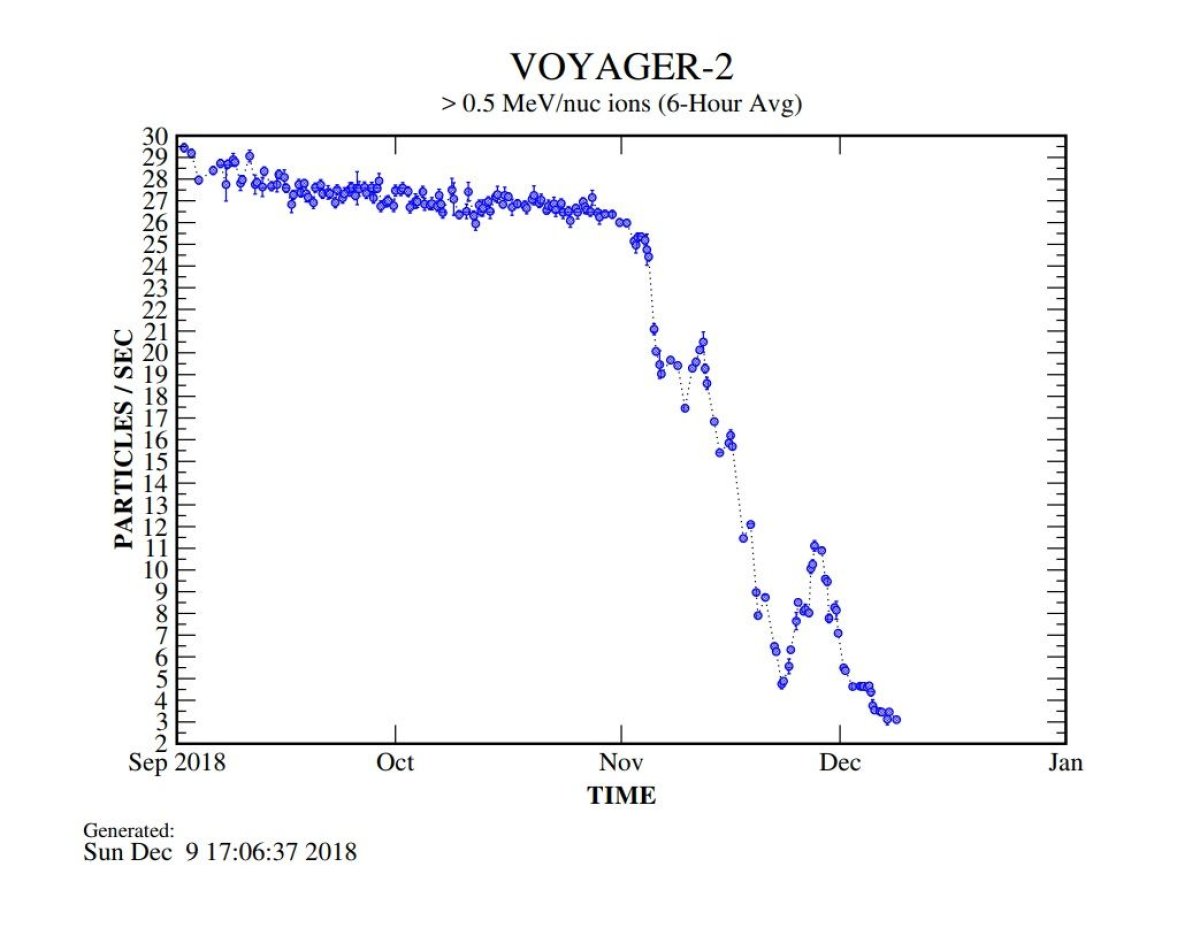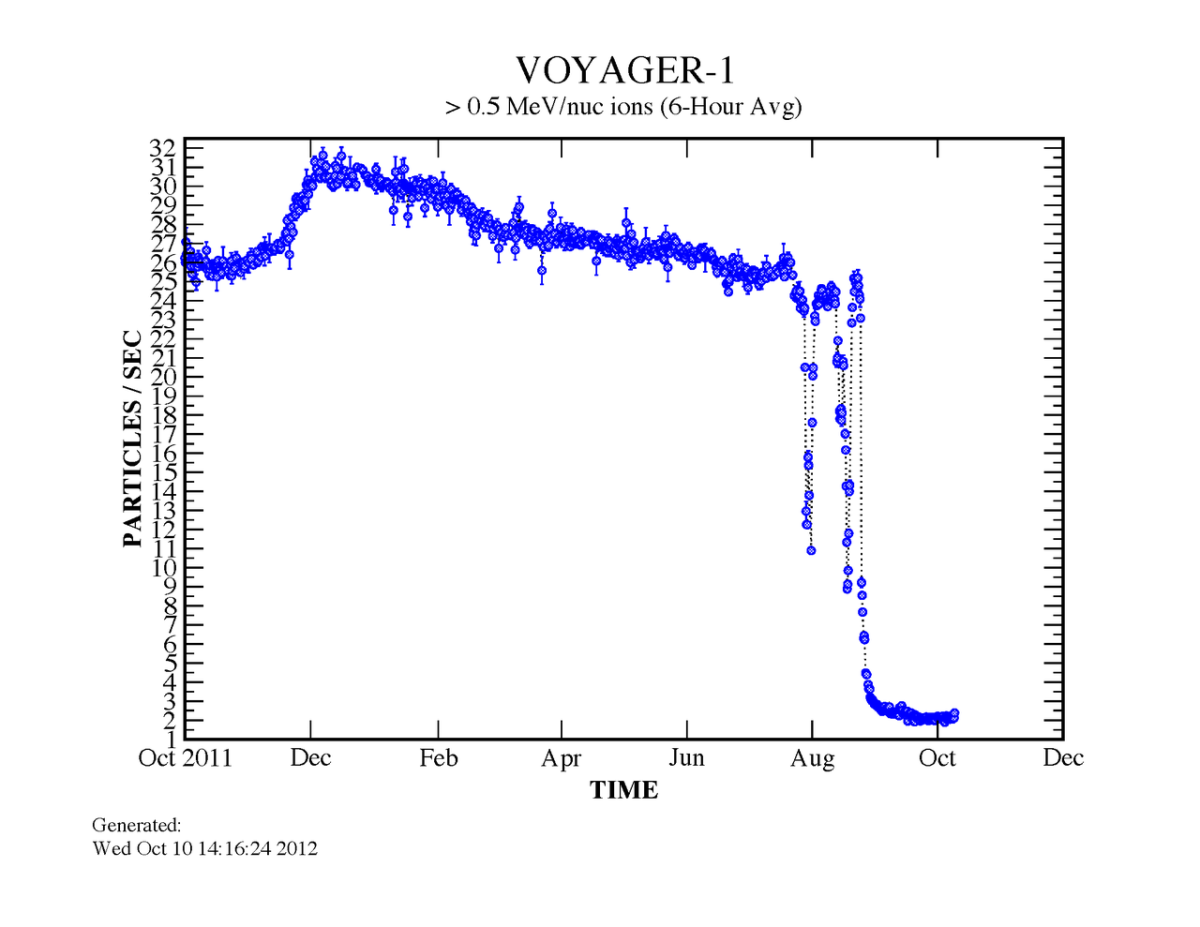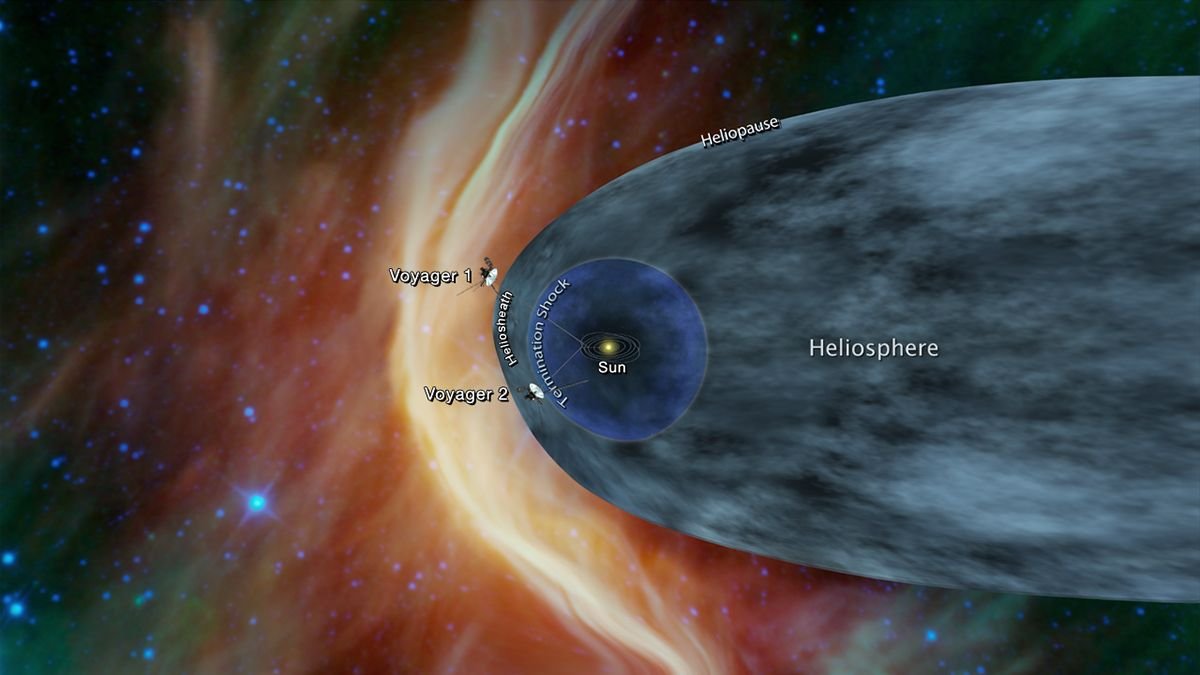NASA's Voyager 2 spacecraft has left the heliosphere 41 years after its launch in 1977. The space agency announced that the spacecraft had entered interstellar space in a statement on Monday. NASA scientists will provide further details on Voyager 2's whereabouts in a press conference at 11 a.m. ET.
On Sunday, data from Voyager 2 indicated a major change in its environment. The spacecraft recorded an increase in cosmic rays—fast-moving particles that originate in interstellar space—in the same way Voyager 1 did before it crossed the heliopause into the void between star systems.
Read more: Most of the universe is missing—a "dark fluid" with negative mass could explain why
Our solar system is like a huge bubble created by the sun. The edge of this bubble is called the heliosphere, with the heliopause marking the outer boundary. Beyond this is interstellar space. In this region, the solar wind from the sun stops affecting its surroundings.
In October, NASA said that Voyager 2 had been measuring a 5 percent increase in the rate of cosmic rays hitting the spacecraft's Cosmic Ray Subsystem compared to August. The heliosphere blocks a certain amount of cosmic rays, so an increase indicates that the spacecraft was leaving the heliosphere.
"In May 2012, Voyager 1 experienced an increase in the rate of cosmic rays similar to what Voyager 2 is now detecting," NASA said in the October statement. "That was about three months before Voyager 1 crossed the heliopause and entered interstellar space."
Voyager 2 is currently around 11.1 billion miles from Earth. It has been traveling through the heliosphere since 2007, and scientists have been waiting for it to exit ever since. Data recently released by NASA appeared to show that Voyager 2 had gone through a very similar environmental change as Voyager 1 did when it left the heliosphere.


Voyager 2 is not as far from Earth as Voyager 1 was when scientists confirmed it had entered interstellar space. However, the heliopause moves inward and outward in line with the sun's 11-year cycle, so Voyager 2 might not have quite as far to travel before entering interstellar space as its predecessor did.
NASA scientists will be talking at the American Geophysical Union conference at 11 a.m. You can watch the event via NASA TV below. The briefing is titled "Voyager 2: Updates on the Journey to Interstellar Space."
Voyager 1 entered interstellar space in 2012. It is currently traveling toward the constellation Ophiuchus and will come within 1.7 light years of another star in the year 40,272 A.D. Voyager 2 is heading for the constellations of Sagittarius and Pavo, where it will come within 1.7 light years of the star Ross 248 in approximately 40,000 years.
Neither Voyager spacecraft has yet left the solar system. "The solar system is considered to include the Oort Cloud which extends out to about 100,000 AU from the sun," NASA explained. "The Voyagers are both at about 119 AU from the sun."

This story and headline have been updated to confirm that Voyager 2 has entered interstellar space and to add additional details about the spacecraft.
Uncommon Knowledge
Newsweek is committed to challenging conventional wisdom and finding connections in the search for common ground.
Newsweek is committed to challenging conventional wisdom and finding connections in the search for common ground.
About the writer
Hannah Osborne is Nesweek's Science Editor, based in London, UK. Hannah joined Newsweek in 2017 from IBTimes UK. She is ... Read more
To read how Newsweek uses AI as a newsroom tool, Click here.








